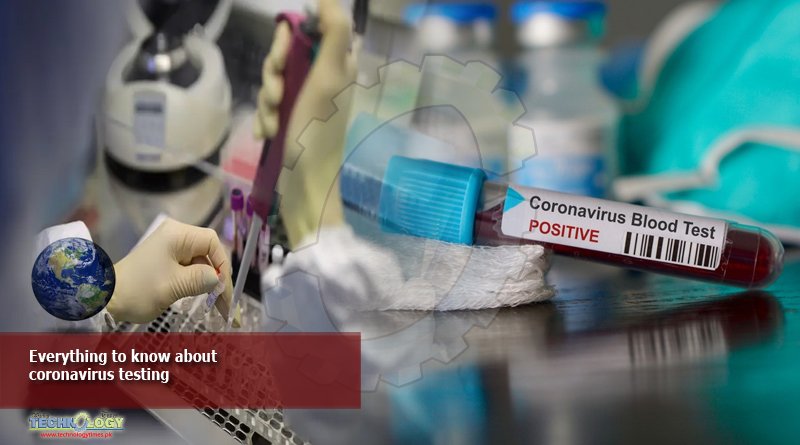For the first time, a person in the United States has tested positive for the novel coronavirus that causes COVID-19 and officials aren’t sure how they caught the disease, the Centers for Disease Control confirmed on February 26.

The sick person—a woman in Northern California—hadn’t recently traveled to China or any region hit by the outbreak nor had she had contact with another person known to be infected with the virus, which has typically been how the disease has made its way outside of China. It’s still possible that she caught the virus from a returned traveler who was infected, the agency said in a statement. However, this might also be a sign that the virus is spreading within the community, a situation that officials have recently said is likely inevitable in the United States.
It’s not clear how severe the outbreak will become, or how many people will get infected with the virus. As the disease becomes harder to track, more people are going to want to get checked out to make sure they don’t have the virus. Here’s what you need to know about testing for COVID-19.
How can I get tested for COVID-19?
Once COVID-19 began spreading throughout China, the CDC researched and developed a test that can detect the new coronavirus. Unfortunately, as of now, it’s still not currently available in hospitals and clinics. Because of a faulty ingredient in test kits that the CDC sent to labs nationwide earlier this month, only a handful of state and local health departments outside the the government facility have been able to perform the test. On February 26 the CDC and Food and Drug Administration reported that they have fixed the problem and 40 laboratories around the U.S. so far have been authorized to use a modified form of the test.
Not everyone can go to their doctors today and get tested for the novel virus. There are strict rules about who can get screened for COVID-19; until now testing has been limited to people who have recently traveled to China or came into contact with someone known to be infected with the coronavirus. The woman who was recently diagnosed with COVID-19 in California had to wait several days to be tested after she arrived at the UC Davis Medical Center in Sacramento because she did not fit within this narrow criteria. However, on February 27 the agency expanded its guidelines for who can be tested for COVID-19.
If you’re worried you might have been exposed to the coronavirus, you should first call your doctor. If your doctor evaluates you and suspects you have COVID-19, they will consult with state public health authorities, who in turn will contact the CDC, says Paul Biddinger, director of the Center for Disaster Medicine at Massachusetts General Hospital in Boston.
“Because there is such limited testing capability, it takes a while to go through the chain of command to get permission to send a sample and then ultimately to send the sample to the CDC and get the result,” he says. “That typically takes at least a couple of days.”
If you are tested for the virus, doctors will take a swab of your nose, your mouth, and possibly the gunk you cough up and collect a blood sample to send to a laboratory.
“Then it’s up to state public health authorities to determine what the patient should do while we are awaiting the results,” Biddinger says. Typically, people who are being evaluated for the coronavirus are kept isolated either at home or in a hospital.
What happens if I test positive for the disease?
Getting treated for the coronavirus doesn’t hinge on a positive test. There currently isn’t any antiviral treatment recommended to combat COVID-19, although the National Institutes of Health have started clinical trials for a drug called remdesivir. For now, treatment is focused on helping people withstand the symptoms of the virus, especially more dangerous ones like difficulty breathing, fever, and dehydration.
“The most important implications of a positive test are to help with appropriate isolation and quarantine to limit the spread of illness,” Biddinger says. If someone tests positive for the disease, public health officials will try to determine whether they might have infected anyone else. People who have been in close contact with a person diagnosed with COVID-19 can then be isolated and treated if they too are sick, or kept in quarantine if they aren’t showing symptoms.
Will testing become more accessible?
As the disease spreads, it will be crucial for testing to become more widely available, Biddinger says. “If we have to admit patients to a hospital, we really need to know whether they have COVID-19 or not to make sure we’re using appropriate infection control precautions.”
However, he adds, most people should not expect that they will be tested for the coronavirus if they have only mild symptoms.
“People with mild illness with fever and cough should follow simple precautions to stay at home and stay away from others and they do not necessarily need to get tested for COVID-19,” he says. In fact, staying at home when you have mild and nonspecific cold-like symptoms might even prevent you from catching COVID-19. “In China we saw that their healthcare system was overwhelmed with patients presenting with mild illness requesting testing, and that both puts a significant burden on the medical system and potentially brings together people who do and don’t have illness and provides greater opportunity for the illness to spread.”
